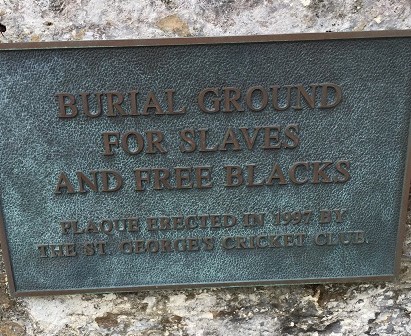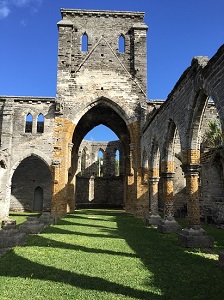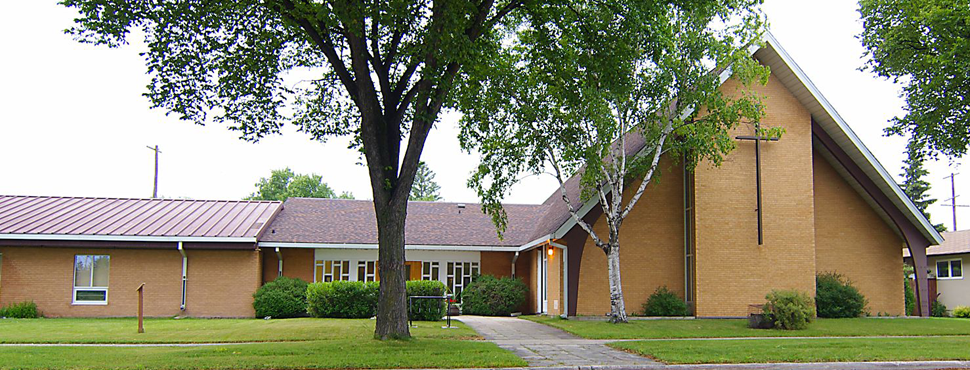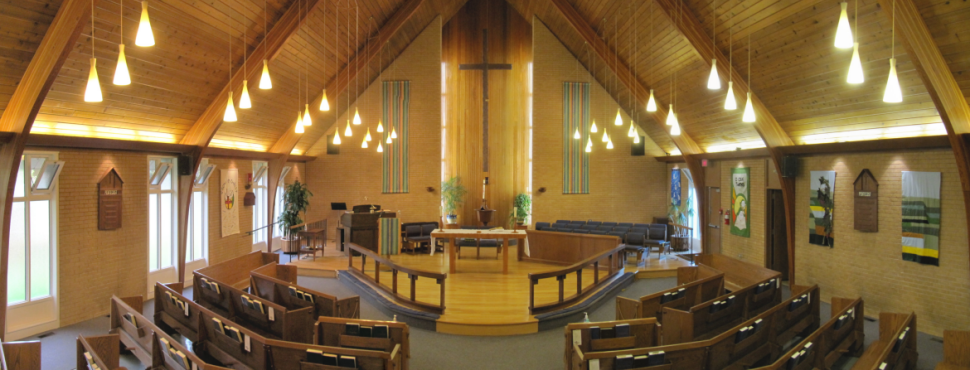A Surprise Visit to a St. Peter's Namesake

By Lissa M. Wray Beal
On a recent trip to Bermuda (a wonderful escape from Winnipeg’s post-Christmas snowstorms), my husband Steve and I spent a day in the historic town of St. George. The original town was founded in 1609 by temporarily-stranded shipwreck passengers enroute to the Jamestown settlement. It is now a UNESCO world heritage site and, in the off-season, a lovely place to spend our New Year’s Eve day.
We took part in a walking tour, hearing stories of the houses inhabited for centuries and now inhabited by modern families. We saw the old harbor, and, once the tour was over, enjoyed a bowl of typical fish chowder (complete with sherry pepper sauce). But the delight of the day was discovering that the town’s parish church had a very familiar name: the Parish of St. Peter!
The historic church was founded in 1612, and is the oldest place of continuous Anglican worship in the western hemisphere, (outside of England). As we stood at the bottom of the steps leading to its front door, I paused for a moment to remember,
and pray for, my own parish of St. Peter back home. I wondered what a visitor 400 years from now might discover about who we had been: our sense of mission, our style of worship, where we had grown as disciples of Christ.

The parish church in St. George has a current floor-plan of a “T,” with the leg of the “T” being short, and the cross-bar much longer. Originally, the cross-bar had been the centre aisle, and at its front was the rail and table. But over time, the focus of worship shifted from the table to the Word preached. This shift in focus was clearly in mind when the church was renovated and enlarged. The short leg of the “T” was added and this became the new centre aisle, leading to the pulpit and lectern at the intersection of the “T.” This placed the lectern and pulpit as the visual centre of the church, reflecting the new focus. Only when you walked the centre aisle to the lectern and pulpit did you notice the table off to your right, at the end of the cross-bar. In comparison, our St. Peter’s places the table and the lectern together at the front, reflecting our understanding that both the Word preached and the table are central to Christian faith. I was thankful for our dual focus.
In the church’s nave (the place where all the people sit for worship), there were some reminders of the church’s history: a cordoned-off and very old bishop’s chair, an old flag. These were thoughtfully placed, with notes indicating their significance. But the church was not filled with too many of these older items, so one was not distracted as one worshipped. Rather, several older items were displayed in an adjacent room, thus honoring them as part of the church’s living history.
As we left the church, we stopped to talk with one of the parish members who had welcomed our visit. She showed me the bulletin, and we laughed at our connection through our shared namesake. It felt a bit like meeting with an unexpected family member! We dropped a donation in the offering plate as we left, thankful for the parish’s ongoing ministry, and I blessed her and the church as they continued as Christ’s disciples.
We left through the parish cemetery (sadly noting the segregated section, which for many years had been reserved for the interment of black parish members). We were reminded that the church is not immune to following the norms of society, rather than those of Christ.

Our walk then took us uphill to Church Folly Lane, where we encountered another sad part of the parish’s history. At the top of the hill stood the Unfinished Church: a grand stone structure in gothic style. But it was only a ruin, with no living community worshipping in it! Started in 1874 as a replacement for the parish church, congregational squabbles and lack of funds caused a church split and the building was never finished.

As we sat on the broken church steps, I reflected on the unity we enjoy at our own St. Peter’s. As we move in new directions of ministry to seek to be a place of vibrant disciples within our post-Christendom context, I prayed that we would continue to walk in unity, courage, and faith.
As we waited for the island bus to take us back to our apartment, Steve and I reflected that our holidays so often feel like pilgrimages! Because we love to visit the churches we find along our way, we often are reminded of Christ’s church through the ages. We stop for a moment, reflecting on God’s faithfulness to his church, and praying for our own church communities. St. Peter’s in historic St. George is now 400 years old, and still a vibrant parish. St. Peter’s in Winnipeg celebrated its 60th anniversary this year. May we worship, pray, and serve toward our own 400th anniversary!


